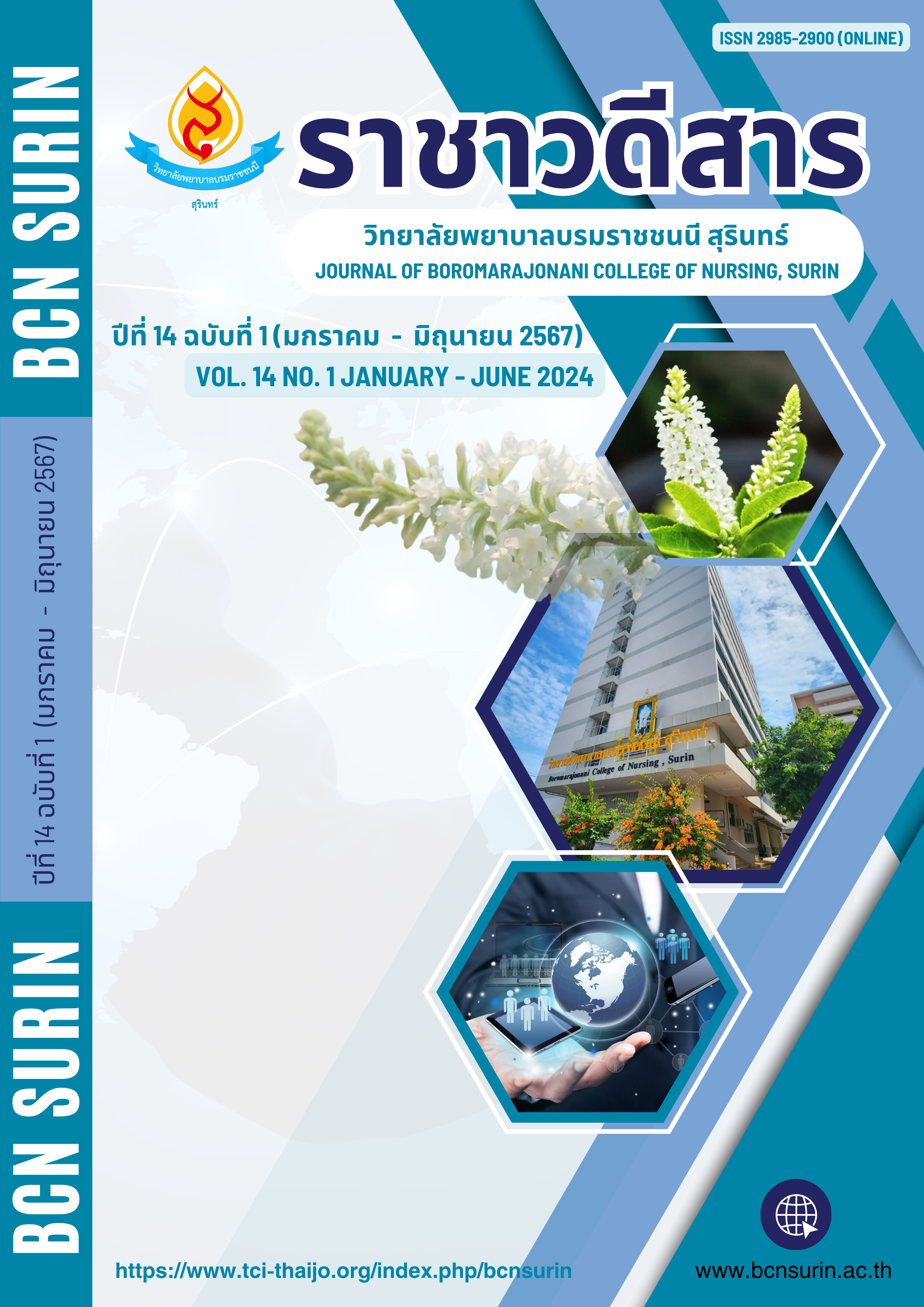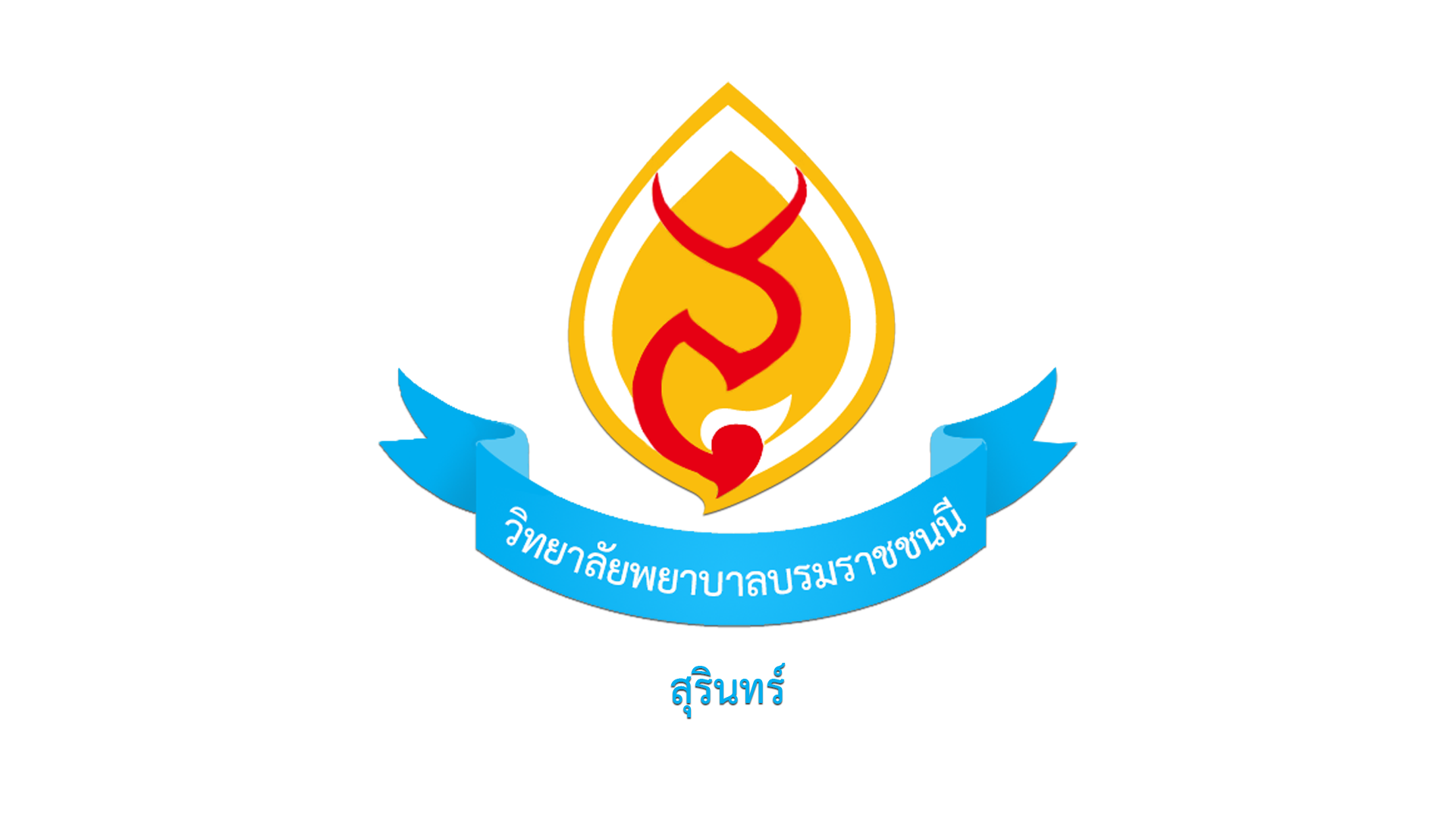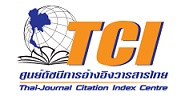การประเมินความเสี่ยงโรคหลอดเลือดสมองด้วย Color Chart ในผู้ป่วยโรคเบาหวาน และโรคความดันโลหิตสูง โรงพยาบาลอำเภองาว จังหวัดลำปาง
คำสำคัญ:
โรคเบาหวาน , โรคความดันโลหิตสูง , โรคหลอดเลือดสมอง , แบบประเมินตารางสีบทคัดย่อ
การวิจัยนี้เป็นการวิจัยเชิงพรรณนาแบบย้อนหลัง มีวัตถุประสงค์เพื่อประเมินความเสี่ยงด้านโรคหลอดเลือดสมองด้วยตารางสี ในผู้ป่วยโรคเบาหวานและโรคความดันโลหิตสูง วิเคราะห์คุณสมบัติเฉพาะของการใช้ตารางสีเปรียบเทียบกับการวินิจฉัยด้วยเอกซเรย์คอมพิวเตอร์ กลุ่มตัวอย่างคัดเลือกแบบเฉพาะเจาะจง จากฐานข้อมูล ผู้ป่วยโรคเบาหวานและความดันโลหิตสูงที่มารักษาโรงพยาบาลงาว จังหวัดลำปาง ระหว่างวันที่ 1 ตุลาคม 2564 ถึง 30 กันยายน 2565 จำนวน 7,338 คน เครื่องมือวิจัย ได้แก่ แบบประเมินความเสี่ยงโรคหัวใจและหลอดเลือดสมองโดยใช้ตารางสี ค่าความเที่ยงระหว่างผู้ประเมินที่วิเคราะห์ด้วยสถิติสหสัมพันธ์ (Spearman rho) อยู่ในระดับดีมาก (rS=1.00, p=.000) วิเคราะห์ข้อมูลโดยใช้สถิติเชิงพรรณนา ความไว ความจำเพาะ ค่าทำนายการเป็นโรค ค่าทำนายการไม่เป็นโรค และความถูกต้อง
ผลการวิจัยพบว่า กลุ่มตัวอย่างทั้งสองกลุ่มโรคที่ได้รับการประเมินความเสี่ยงด้วยตารางสี ส่วนใหญ่ (³ 80 %) มีผลการประเมินในระดับความเสี่ยงต่ำและปานกลาง โดยผลการประเมินด้วยตารางสีมีความสัมพันธ์กับผลการวินิจฉัยจากเอกซเรย์คอมพิวเตอร์ อย่างมีนัยสำคัญ (p< 0.0001) การวิเคราะห์คุณสมบัติเฉพาะของด้านของการใช้ตารางสีเปรียบเทียบกับผลจากเอกซเรย์คอมพิวเตอร์พบว่า เมื่อใช้เกณฑ์จุดตัดตามตารางสีตั้งแต่ระดับเสี่ยงปานกลางขึ้นไป (³ 10 %) จะได้ค่าความไว (sensitivity) 70.19% ดีกว่าใช้เกณฑ์ที่ระดับเสี่ยงสูงขึ้นไป (³ 20%) ทั้งนี้ค่าทำนายการเป็นโรคและไม่เป็นโรค มีค่าใกล้เคียงกัน ข้อเสนอแนะ การประเมินความเสี่ยงโรคหลอดเลือดสมองโดยใช้ตารางสี มีความง่ายในการตรวจคัดกรองผู้ป่วยโรคหลอดเลือดสมอง ซึ่งมีค่าใช้จ่ายต่ำ และเหมาะสมกับบริบทโรงพยาบาลชุมชน
เอกสารอ้างอิง
กระทรวงสาธารณสุข, กรมควบคุมโรค, กองโรคไม่ติดต่อ. (2566, 18 มกราคม). จำนวนและอัตราตายด้วย 5 โรคไม่ติดต่อ (ปี 2560 - 2564). http://www.thaincd.com/2016/mission/documents-detail.php?id=14480&tid=32&gid=1-020
จุรีพร คงประเสริฐ, สุมนี วัชรสินธุ์, และณัฐธิวรรณ พันธ์มุง (บ.ก.). (2558). การประเมินโอกาสเสี่ยงต่อการเกิดโรคหัวใจและหลอดเลือด ในผู้ป่วยเบาหวานและความดันโลหิตสูง. สำนักโรคไม่ติดต่อ กรมควบคุมโรค. กองโรคไม่ติดต่อ. http://www.thaincd.com/2016/media-detail.php?id=10667&tid=1-001-003,38&gid=1-026
ธิดารัตน์ อภิญญา (บ.ก.). (2560). ชุดรูปแบบบริการในการป้องกัน ควบคุมโรคหลอดเลือดหัวใจ โรคหลอดเลือดสมอง และโรคไตเรื้อรัง สำหรับสถานบริการ (CVD CKD detection and prevention control Package). กลุ่มโรคไม่ติดต่อเรื้อรัง สำนักโรคไม่ติดต่อ กรมควบคุมโรค กระทรวงสาธารณสุข. http://www.thaincd.com/document/file/info/non-communicable-disease/CVD_CKD_detection_and_preventeion_control_Package.pdf
Alloubani, A., Saleh, A., & Abdelhafiz, I. (2018). Hypertension and diabetes mellitus as a predictive risk factors for stroke. Diabetes & Metabolic Syndrome, 12(4), 577–584. https://doi.org/10.1016/j.dsx.2018.03.009
Alshehri A. M. (2019). Stroke in atrial fibrillation: Review of risk stratification and preventive therapy. Journal of Family & Community Medicine, 26(2), 92–97. https://doi.org/10.4103/jfcm.JFCM_99_18
Campbell, B. C. V., De Silva, D. A., Macleod, M. R., Coutts, S. B., Schwamm, L. H., Davis, S. M., & Donnan, G. A. (2019). Ischaemic stroke. Nature Reviews Disease Primers, 5(1), 70. https://doi.org/10.1038/s41572-019-0118-8
Duangrithi, D., Wattanasermkit, R., Rungwijee, S., & Khunsom, N. (2020). Thai CV risk score and primary prevention in impaired fasting plasma glucose or diabetes mellitus versus normoglycemia in patients with metabolic syndrome. International Journal of Preventive Medicine, 11, 139. https://doi.org/10.4103/ijpvm.IJPVM_12_19
Otgontuya, D., Oum, S., Buckley, B. S., & Buckley, B. S. (2013). Assessment of total cardiovascular risk using WHO/ISH risk prediction charts in three low and middle income countries in Asia. BMC Public Health, 13, 539. https://doi.org/10.1186/1471-2458-13-539
Mendis, S., Lindholm, L. H., Mancia, G., Whitworth, J., Alderman, M., Lim, S., & Heagerty, T. (2007). World Health Organization (WHO) and International Society of Hypertension (ISH) risk prediction charts: Assessment of cardiovascular risk for prevention and control of cardiovascular disease in low and middle-income countries. Journal of Hypertension, 25(8), 1578–1582. https://doi.org/10.1097/HJH.0b013e3282861fd3
Migdady, I., Russman, A., & Buletko, A. B. (2021). Atrial Fibrillation and Ischemic Stroke: A Clinical Review. Seminars in Neurology, 41(4), 348–364. https://doi.org/10.1055/s-0041-1726332
Rahmawaty, E., & Yusro, M. (2023). Effectiveness test of stroke risk detection application model, stroke risk scorecard. Journal of World Science, 2(2), 292-299.
Rosenthal, R., & Rosnow, R. L. (1991). Essentials of behavioral research: Methods and data analysis. McGraw-Hill.
Tarwoto, T., Handayani, S., Nurulhuda, U., Hasnani, F., & Mutaqin, Z. Z. (2022). Utilization of stroke early detection card: Stroke risk score card In detecting the risk of stroke In the environment citizens of Poltekkes Jakarta I. International Journal of Social Service and Research, 2(3), 225-230.
Thammasarn, K., Loahasiriwong, W., Mahato, R. K., & Sornlom, K. (2022). Spatial association between sociodemographic, environmental factors and prevalence of stroke among diabetes and hypertension patients in Thailand. The Open Public Health Journal, 15(1). 10.2174/18749445-v15-e2210191
WHO CVD Risk Chart Working Group. (2019). World Health Organization cardiovascular disease risk charts: Revised models to estimate risk in 21 global regions. The Lancet Global Health, 7(10), e1332–e1345. https://doi.org/10.1016/S2214-109X(19)30318-3
World Health Organization. (2023, September 16). Noncommunicable diseases. https://www.who.int/news-room/fact-sheets/detail/noncommunicable-diseases
Yen, F. S., Wei, J. C., Chiu, L. T., Hsu, C. C., & Hwu, C. M. (2022). Diabetes, hypertension, and cardiovascular disease development. Journal of Translational Medicine, 20(1), 9. https://doi.org/10.1186/s12967-021-03217-2
ดาวน์โหลด
เผยแพร่แล้ว
รูปแบบการอ้างอิง
ฉบับ
ประเภทบทความ
สัญญาอนุญาต
ลิขสิทธิ์ (c) 2024 ราชาวดีสาร วิทยาลัยพยาบาลบรมราชชนนี สุรินทร์

อนุญาตภายใต้เงื่อนไข Creative Commons Attribution-NonCommercial-NoDerivatives 4.0 International License.
เนื้อหาและข้อมูลในบทความที่ตีพิมพ์ในราชาวดีสาร วิทยาลัยพยาบาลบรมราชชนนี สุรินทร์ ถือเป็นข้อคิดเห็นและความรับผิดชอบของผู้เขียนบทความโดยตรง ซึ่งกองบรรณาธิการวารสารไม่จำเป็นต้องเห็นด้วย หรือร่วมรับผิดชอบใดๆ
บทความ ข้อมูล เนื้อหา รูปภาพ ฯลฯ ที่ได้รับการตีพิมพ์ในราชาวดีสาร วิทยาลัยพยาบาลบรมราชชนนี สุรินทร์ หากบุคคลหรือหน่วยงานใดต้องการนำทั้งหมดหรือส่วนหนึ่งส่วนใดไปเผยแพร่หรือกระทำการใดๆ จะต้องได้รับอนุญาตเป็นลายลักษณ์อักษรจากราชาวดีสาร วิทยาลัยพยาบาลบรมราชชนนี สุรินทร์ ก่อนเท่านั้น







